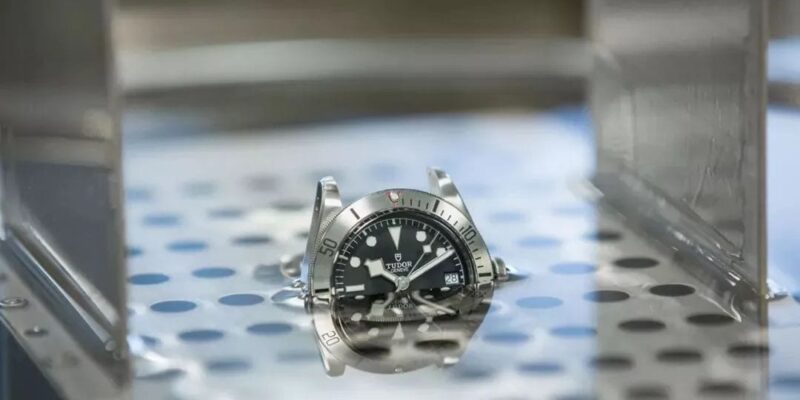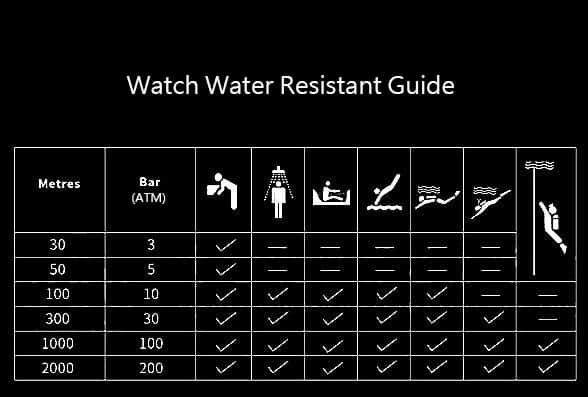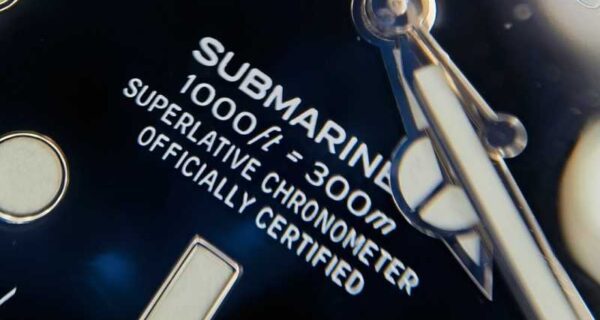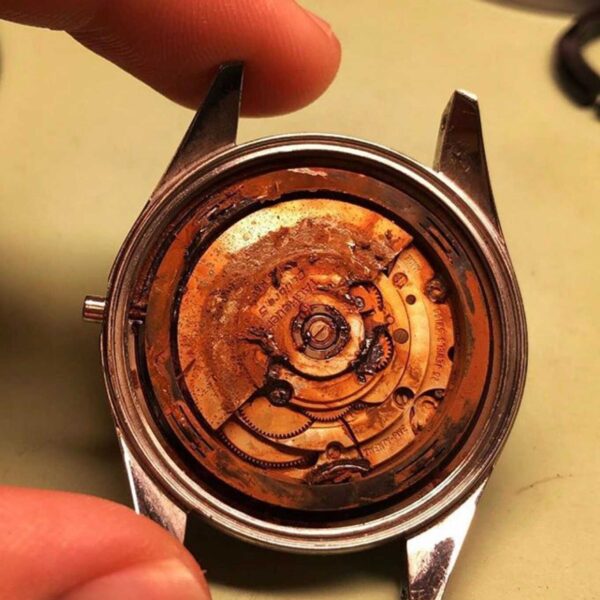When watches first gained popularity in the early 1900s, water resistance was merely a distant dream. However, as the demand for waterproof timepieces grew, watch brands embarked on a quest to enhance the watch water resistance.
Today, we take water resistance for granted, with most watches being safe from accidental water exposure in everyday life.
However, it is important to strike a balance between protecting your watch and understanding its water resistance capabilities. In this comprehensive guide, we will delve into the world of water resistance in watches.

By this tool you can easily convert bar to ft.
Watch Water Resistant Types
Understanding the different levels of water resistance is crucial when choosing a watch. Most watches are marked with “WATER RESISTANT” on the back, indicating their water resistance capabilities.
Here is a water resistant chart for briefly checking:

3 ATM (3 BAR, 30m, 100ft) Watches
Watches with water resistance up to 50 meters are suitable for everyday life. They can withstand splashes and raindrops. However, they are not designed for prolonged immersion in water.
5 ATM (5 BAR, 50m, 165ft) Watches
When your watch says 5 ATM water resistant, then it is almost the same as 3 ATM watch, which means 5 ATM watches are also only suitable for everyday life. They can withstand splashes and raindrops. Someone may tell you a 5 ATM watch is available in the shower, but it is really not recommended.
10 ATM (10 BAR, 100m, 330ft) Watches
Watches with water resistance 10 ATM are more robust and can handle activities like swimming. Unlike the 5 ATM watches, the 10 ATM watches usually have a screwed down case back to guarantee a better water resistant performance, or sometimes you will see some 10 ATM watches come with a screwed down crown.However they are not available for diving.
20 ATM (20 BAR, 200m, 660ft) Watches
If a watch is rated to 20 ATM or 200 meters, then you can do swimming, surfing and diving without any worry. The screwed down crown and caseback are necessary to make a 20 ATM watch, and even the watch glass is thicker than 10 ATM watches to bear the heavier pressure under the water.

30 ATM (30 BAR, 300m, 990ft) Watches
If you are looking a professional watch, then 30 ATM water resistant is needed for a watch. They feature airtight construction, reinforced seals, and often include helium drainage valves for deep-sea diving. The valve allows excess helium to escape from the watch when transitioning from high-pressure to normal atmospheric conditions
Maintaining Water Resistance

It is well known that the watch water resistant is determined by three very critical elements – the case structure, the glass fit, and the integrity of the rubber ring. But keep in mind that over time, as a watch is worn and worn, its performance decreases.To maintain a watch’s water resistance, proper care is essential.Here are some important maintenance tips:
- Avoid High-Pressure Water: Avoid exposing your watch to high-pressure water, such as using it in hot showers, saunas, or jacuzzis. The increased pressure can force water into the watch, leading to damage.
- Operate Pushers and Crowns Safely: Do not operate the pushers or crowns of your watch when moisture is present, as this can allow water to enter the case. Always ensure the watch is dry before making any adjustments.
- Chemical Exposure: Avoid exposing your watch to chemicals like solvents, perfumes, or cleaning agents, as they can deteriorate the watch’s seals and compromise water resistance.
- Hot Springs and Saltwater: Hot springs and saltwater can be particularly harmful to watches. The minerals and corrosive nature of saltwater can damage the watch’s case and seals. Rinse your watch with freshwater after exposure to saltwater, and avoid hot springs altogether.
- Regular Servicing: Regular servicing by a qualified watchmaker is recommended to ensure the watch’s water resistance is maintained. This includes inspecting and replacing worn-out seals, checking the movement for water damage, and performing pressure tests to verify the watch’s water resistance.
What Should You Do When Watch Gets Wet
If your watch gets water, it’s important to take immediate action to minimize potential damage. Here are the steps you should follow:
- Remove the Watch from Water: As soon as you notice water on or inside your watch, take it out of the water source immediately. The longer the watch remains submerged, the higher the chances of water seeping into the delicate internal components.
- Do Not Operate the Watch: Avoid operating any buttons, crowns, or pushers on the watch. Operating the watch while it’s wet can force water deeper into the case, increasing the risk of damage.
- Wipe the Exterior: Use a soft, absorbent cloth to gently wipe the exterior of the watch, removing any visible water. Be careful not to rub or apply excessive pressure, as this might push water into the watch.
- Open the Case (If Possible): If you have experience and tools, you can open the caseback of the watch to access the interior. However, this step should only be done if you are confident in your ability to do so without causing further harm. Opening the caseback allows any trapped water or moisture to evaporate more effectively.
- Dry the Watch: After wiping the exterior and, if applicable, opening the caseback, place the watch in a dry and well-ventilated area. You can also use a soft cloth or tissue to gently absorb any remaining moisture. Avoid using heat sources like hairdryers or direct sunlight, as extreme heat can damage the watch.
- Seek Professional Assistance: If you are uncertain or uncomfortable with opening the watch or if it shows signs of water damage (such as foggy or blurred dial, condensation inside the crystal, or irregular functioning), it’s best to take it to a professional watchmaker or authorized service center. They have the expertise and equipment to assess the damage, perform necessary repairs, and restore the water resistance of the watch.
Remember, prevention is always better than dealing with water damage. It’s essential to understand the water resistance rating of your watch and avoid exposing it to water beyond its intended capabilities. Regular maintenance, including periodic water resistance checks and servicing, can help maintain the watch’s performance and protect it from water-related issues.
Conclusion
Understanding the water resistance of your watch is crucial for its longevity and performance. By recognizing the different levels of water resistance and following proper maintenance practices, you can enjoy your timepiece without compromising its integrity. Whether you have a daily wear watch or a professional diving timepiece, taking care of its water resistance will ensure it accompanies you on your adventures for years to come.


I totally agree when you said that it is always better to prevent water damage than to get those issues fixed. And I hope that did not happen to my sister’s watch but she accidentally dropped it somewhere when she told me about it. So I just hope that she finds a good watch restoration professional that can fix the issues and also remove any scratch and dent on the material to make it look like new again.
Can I ask why 5ATM isn’t suitable for showers? I’ve never heard that before and would love to stay educated on my watch maintenance.